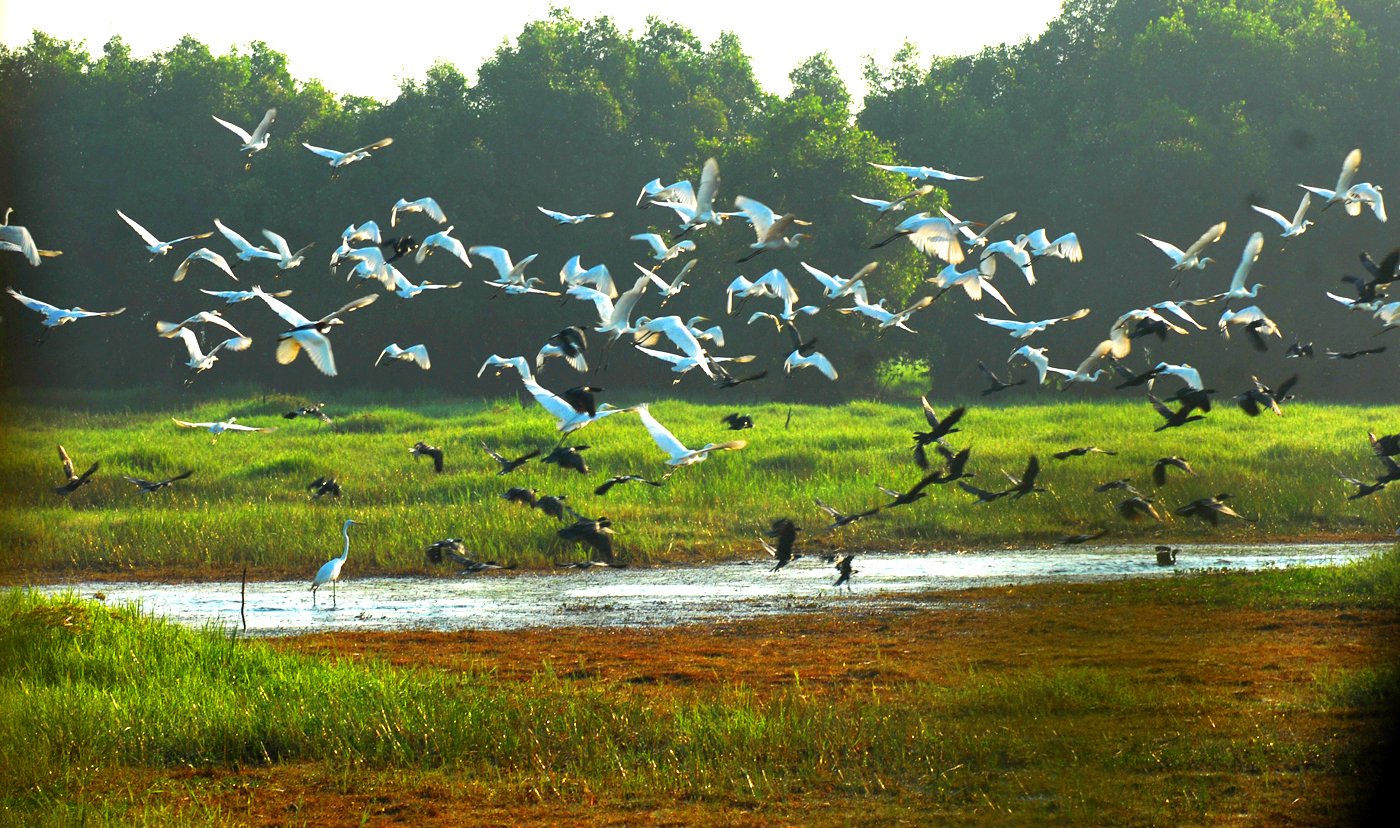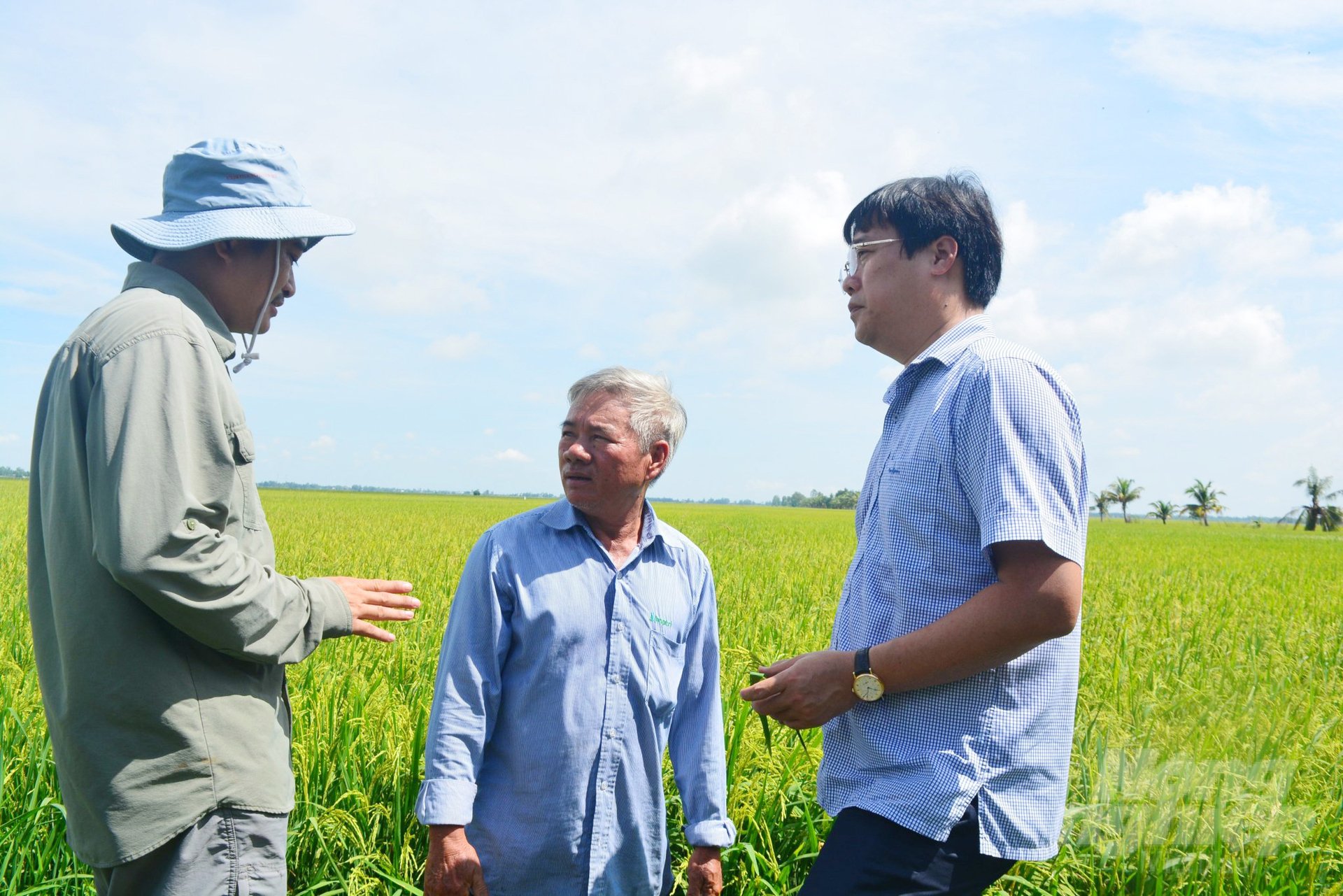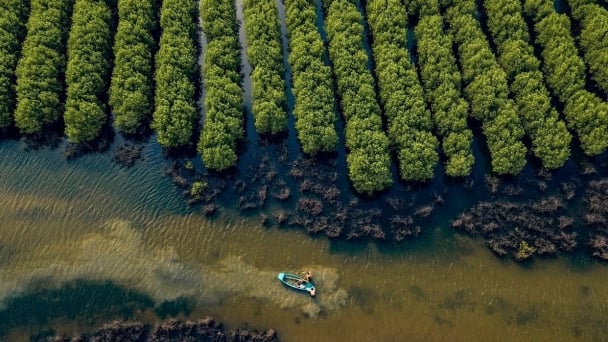June 16, 2025 | 05:41 GMT +7
June 16, 2025 | 05:41 GMT +7
Hotline: 0913.378.918
June 16, 2025 | 05:41 GMT +7
Hotline: 0913.378.918

Tram Chim National Park is home to vibrant vegetation with over 7,500 hectares. Photo: Le Hoang Vu.
Tram Chim National Park Project in Tam Nong district is the area for implementing the Conservation and Development of Cranes Project. It aims to restore and revive the crane population by raising and releasing them into the natural environment. This joint program by the International Crane Foundation (ICF) and the Vietnam Zoo Association (VZA) will facilitate related activities to recover the red-crowned crane population.
According to the agreement between the two organizations, the Zoological Park Organization of Thailand will provide newborn red-crowned cranes to Tram Chim National Park to further nurture and release them into the wild.
Mr. Nguyen Phuoc Thien is the Vice Chairman of the People’s Committee of Dong Thap Province and Head of the Executive Committee of the Conservation and Development of Cranes in the Tram Chim National Park Project.
According to him, the project aims to restore and develop red-crowned cranes by raising and releasing them into the natural environment. Within ten years (2023-2033), the project aims to sustain 150 cranes with a minimum of 100 successful cases. The released cranes can reproduce and survive on their own in the wild.
The project has four main contents: raise and release cranes in Tram Chim National Park; improve the cranes’ habitat; build organic agricultural production areas around the area; promote, educate, and develop sustainable livelihoods based on cranes and organic agriculture; mobilize the participation of local communities. The estimated total cost of implementation is more than 76 billion VND, with which habitat improvement for cranes costs nearly 13 billion VND, organic agricultural production is nearly 6 billion VND, and tourism promotion is around 8 billion VND.

The People’s Committee of Dong Thap Province is the planning area coded A4 within Tram Chim National Park. It is a favorable area to raise cranes into the wild. Photo: Le Hoang Vu.
The People’s Committee of Dong Thap Province is the planning area coded A4 within Tram Chim National Park. It is a favorable area to raise cranes into the wild. Around this area is a buffer zone with an area of 1,623 hectares, which is a good condition for organic rice cultivation instead of using chemical fertilizers like previously.
Currently, there are four households in Phu Duc and Tan Cong Sinh communes participating in organic farming in an area of about 40 hectares. The rice is now over 80 days old, entering the ripening stage.
Mr. Nguyen Van Man, a farmer in Tan Cong Sinh commune (Tam Nong district), has grown 6 hectares of organic rice in buffer zone A4. He reports that National Park’s buffer zone farmers support organic rice cultivation. Farmers are willing to expand the planting area as long as the model is profitable and generates stable output.
Recently, the delegation led by the Secretary of the Dong Thap Province, Mr. Le Quoc Phong, surveyed the key zones of Tram Chim National Park. They are A1, A4, and A5 areas where red-crowned cranes are used to migrate and help farmers in the buffer zone grow organic rice. Area A1 alone has nearly 5,000 hectares, making it a critical Tram Chim National Park area. It provides wetland habitats for waterbirds to live and reproduce.

Within ten years (from 2023 to 2033), the project aims to sustain 150 cranes with a minimum of 100 successful cases. The released cranes can reproduce and survive on their own in the wild. Photo: Le Hoang Vu.
According to Mr. Nguyen Van Lam, Director of Tram Chim National Park, area A1 used to be where cranes migrated. The last time cranes migrated here was in 2021. This area is in the deep zone of the park with a diverse ecosystem and mounds higher than the water level. The project’s first phase will stabilize water levels, implement a separate treatment method to improve dry grassland, and restore heirloom grassland and wild rice.
For cranes to live year-round, the water level in the forest is crucial. However, the water level is difficult to manage, which requires further monitoring and calculation.
Secretary of the Dong Thap Province Le Quoc Phong notes that the Tram Chim National Park Management Board needs to assess the current status of water over the years. This process ensures ecological restoration by proactively maintaining the water level, ensuring good water quality, and limiting wild rice fields.

Secretary of the Dong Thap Province, Le Quoc Phong (on the right), speaks with farmers in the buffer zone of Tram Chim National Park (Tan Cong Sinh and Phu Duc communes) regarding the organic rice pilot model, which ultimately creates a favorable environment for the crane conservation project. Photo: Le Hoang Vu.
In addition, in areas A4 and A5, the Secretary suggests the Management Board of Tram Chim National Park maintain the current status of the Melaleuca forest in this area. This aims to create the best ecosystem focusing on habitat restoration at Tram Chim National Park to preserve and develop cranes and other wild animals.
Mr. Le Quoc Phong, Secretary of Dong Thap Province, emphasizes that the project’s critical point is to restore the national park’s ecosystem. This goal aims to provide a favorable environment where cranes can live, sustain and reproduce. It is necessary to keep the planted Melaleuca forest while considering thinning the regenerated Melaleuca to create an airy environment as a landing ground for cranes.
Translated by Quynh Chi
![Turning wind and rain into action: [4] Bringing climate bulletins to remote and isolated areas](https://t.ex-cdn.com/nongnghiepmoitruong.vn/608w/files/linhnhp/2025/06/14/1152-z6704423696987_15fd32ffc26d590d204d520c9dac6786-nongnghiep-151141.jpg)
(VAN) The Vietnam Agriculture and Nature Newspaper interviewed Mr. Vu Thai Truong, Acting Head of Climate Change and Environment at UNDP Vietnam, to gain deeper insight into how climate bulletins are delivered to farmers.

(VAN) In Tien Giang, a high-tech shrimp farm has developed a distinctive energy-saving farming model that has yielded promising results.
![Turning wind and rain into action: [3] 300.000 farmers benefit from agro-climatic bulletins](https://t.ex-cdn.com/nongnghiepmoitruong.vn/608w/files/news/2025/06/12/e5a48259d6a262fc3bb3-nongnghiep-125122.jpg)
(VAN) The agro-climatic bulletin has become a valuable tool for farmers in the Mekong Delta. After more than five years of implementation, the initiative is gradually being expanded nationwide.
![Turning wind and rain into action: [2] Providing forecasts to the people](https://t.ex-cdn.com/nongnghiepmoitruong.vn/608w/files/news/2025/06/12/e5a48259d6a262fc3bb3-nongnghiep-103927.jpg)
(VAN) In addition to improving the quality of hydrometeorological forecasts, putting forecast bulletins into practical use is crucial for production and disaster prevention.

(VAN) Blue carbon is receiving attention for its rapid absorption capacity and vast potential. It represents a promising nature-based solution to respond to climate change.
/2025/06/11/3507-1-161904_583.jpg)
(VAN) Seagrass beds and coral reefs serve as 'cradles' that nurture life in the ocean depths, creating rich aquatic resources in Vietnamese waters.
![Turning wind and rain into action: [1] Forecasting for farmers](https://t.ex-cdn.com/nongnghiepmoitruong.vn/608w/files/news/2025/06/11/e5a48259d6a262fc3bb3-nongnghiep-111919.jpg)
(VAN) Weather is no longer just a matter of fate. Forecasts have now become an essential companion for farmers in every crop season.